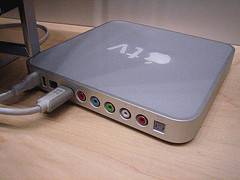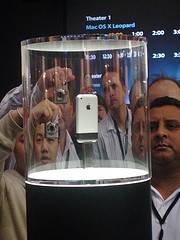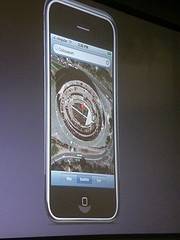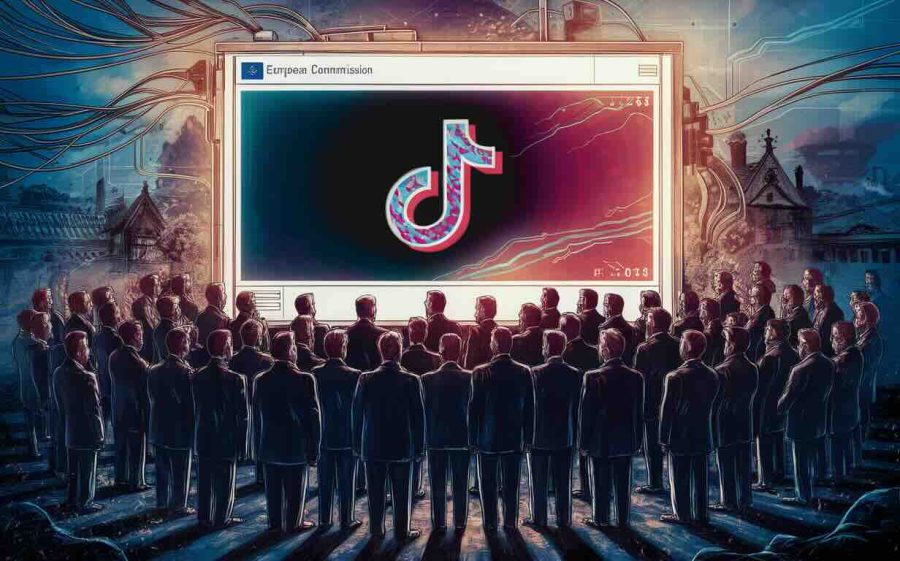By Steve O’Hear, a Mac fan who runs a ZDNet blog
called The Social Web. Steve was also
the writer and director of the documentary In Search of the Valley: a personal journey
into the psyche of Silicon Valley.
Today’s Macworld keynote by Steve Jobs was possibly the most hyped since his return to
the company 10 years ago. Along with the usual speculation and rumors about possible new
products, Apple further fanned the flames of anticipation by publishing a teaser on their
website proclaiming: “The first years were just the beginning. Welcome to 2007.”
Did Jobs deliver? The short answer is yes… and no.
Apple TV
With many features of the
Apple TV (previously code-named iTV) already pre-announced, I was somewhat under-whelmed
by the final product. The Apple TV is primarily a PC extender, designed to stream content
from iTunes (music, movies, television shows and podcasts) from a Mac or PC onto a
television. Additionally, the set-top box can display photos stored in iPhoto (Mac) or
Adobe Photoshop Elements / Photo Album (PC). The only new revelation is that Apple TV
will have a built-in 40GB hard drive, so that users have the option to store some content
on the device – which can be synced with a PC or Mac running iTunes.

Most disappointingly, Apple didn’t open up the Apple TV like I had hoped; to enable it to connect
to web services other than iTunes. Without the ability to pull down content from
elsewhere on the net (such as YouTube or Flickr for example), the device feels too
heavily tied to the iTunes download store. Additionally, the Apple TV faces competition
from the already entrenched XBox 360 – with its newly announced IPTV capabilities – along
with Sling Media’s soon-to-be
released SlingCatcher.
iPhone
The big news was of course
the iPhone, which Read/WriteWeb
covered earlier today. Described as “three revolutionary products in one”, the iPhone
combines the capabilities of an iPod, mobile phone, and internet mobile communicator.
With the iPhone, Jobs and co have seemly achieved the impossible by creating a single
product that simultaneously ticks multiple boxes on many an Apple fan’s wish-list.
Widescreen iPod (check), smart-phone (check), WiFi tablet (check) – all powered by a
version of Apple’s desktop operating system, OS X.

Let’s drill down into some of the iPhone’s defining features…
A gesture-based UI
Perhaps the most revolutionary aspect of the device is its innovative (and patented)
UI, which Apple calls Multi-touch. Designed to be used without a stylus, the device’s
touch-screen can interpret finger ‘gestures’. To unlock the iPhone for example, a user
moves their finger from left to right. Alternatively, to zoom in on a web page or photo,
a pinching gesture is required. A virtual QWERTY keyboard is also available when needed,
for example when taking notes or writing an email.
Desktop-class applications
As already stated, the iPhone runs a version of OSX – and as a result it comes with a
number of applications that Mac users will already be familiar with, including the Safari
web browser, Mail, and Apple Widgets. Also included is an iTunes-like media player, a
photo browser, and standard PIM applications (iCal, Address Book, etc). Where
appropriate, all application data – phone numbers, appointments, music, etc – syncs with
a Mac or PC through iTunes.
Google and Yahoo
Surprisingly, Apple has
partnered with both Google and Yahoo – with each search-engine offered as a default
option. A version of Google Maps is also included and Yahoo is used to power ‘push email’
right out of the box. This positions the iPhone as the latest Blackberry
killer.

Internet connectivity is provided by WiFi and EDGE. The bundled apps from Google and
Yahoo, along with Apple’s webified widgets and the inclusion of a full version of its
Safari browser, makes the iPhone a a serious Internet device – which in some ways
competes with Nokia’s linux-driven Internet tablet, as well as Microsoft’s UMPC
devices.
Other specs
The iPhone has 3.5 inch (diagonally) widescreen with a resolution of 320 by 480 (160
ppi). Storage is flash memory and comes in both a 4GB and 8GB version. The phone is
Quad-band and has a 2 megapixel camera. Apple claims a battery life of 5 hours for talk,
video, and browsing; and 16 hour for audio playback… although no details of standby
time were provided.
iPhone is revolutionary, but needs to open up too
Steve Jobs was clearly excited about this announcement, telling the audience gathered
at the Moscone Center in San Francisco that he’d waited two and a half years to tell us
about the iPhone. And he had every right to be excited. The word revolutionary is banded
about too often, but in many ways the iPhone looks like a major break through –
particularly on the User Interface side.
However, while the bundled apps from Apple, Google and Yahoo are a great start, I’m
hoping that the iPhone (unlike the iPod) will be opened to third-party developers.
With the device being driven by a version of OS X, imagine what the rest of the developer
community could bring to the party. If Apple doesn’t go down this road it will leave many
a Mac fan (including myself) wanting more.
Flickr Photos: Chris Heuer and
Alex Choi










